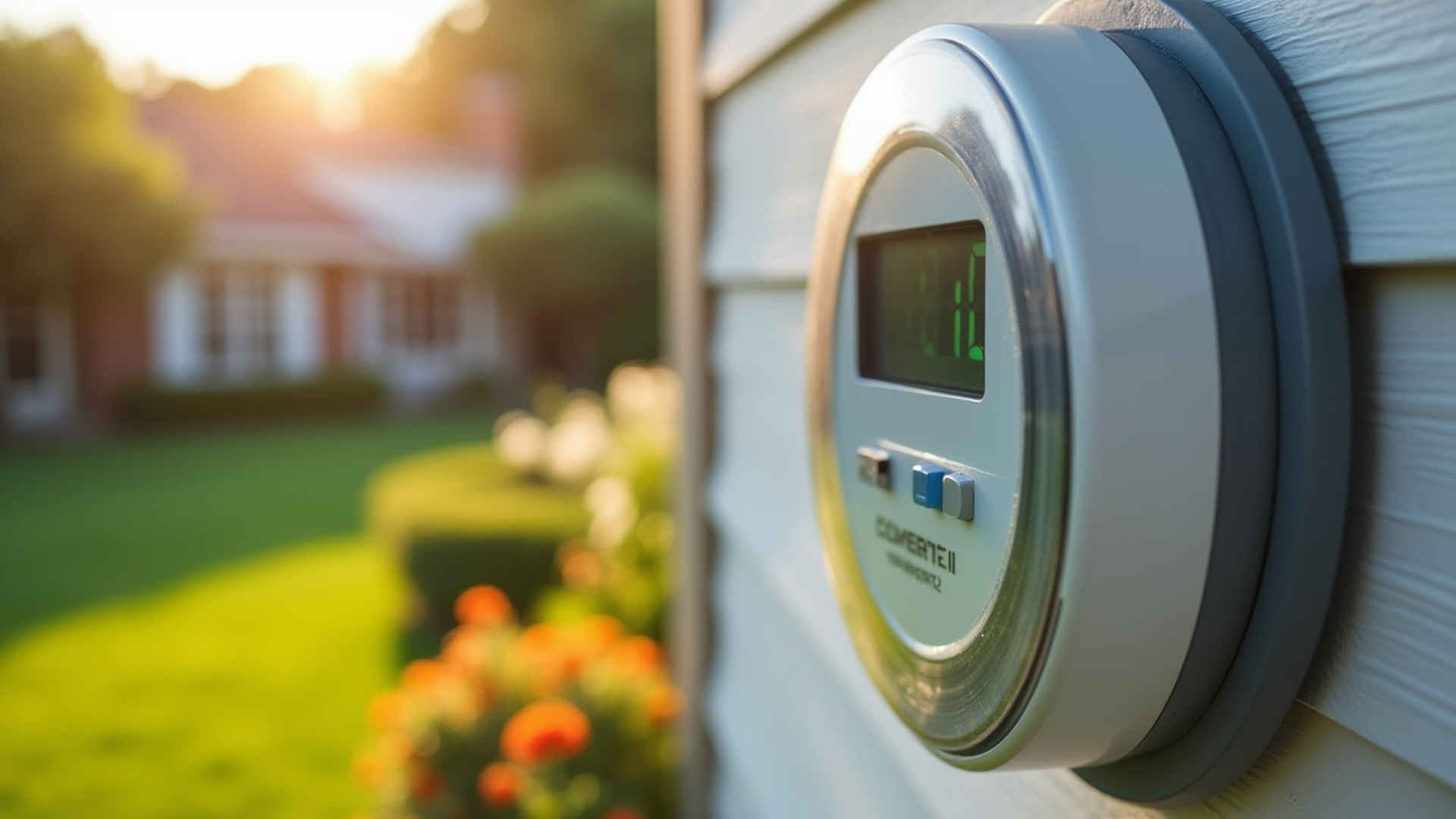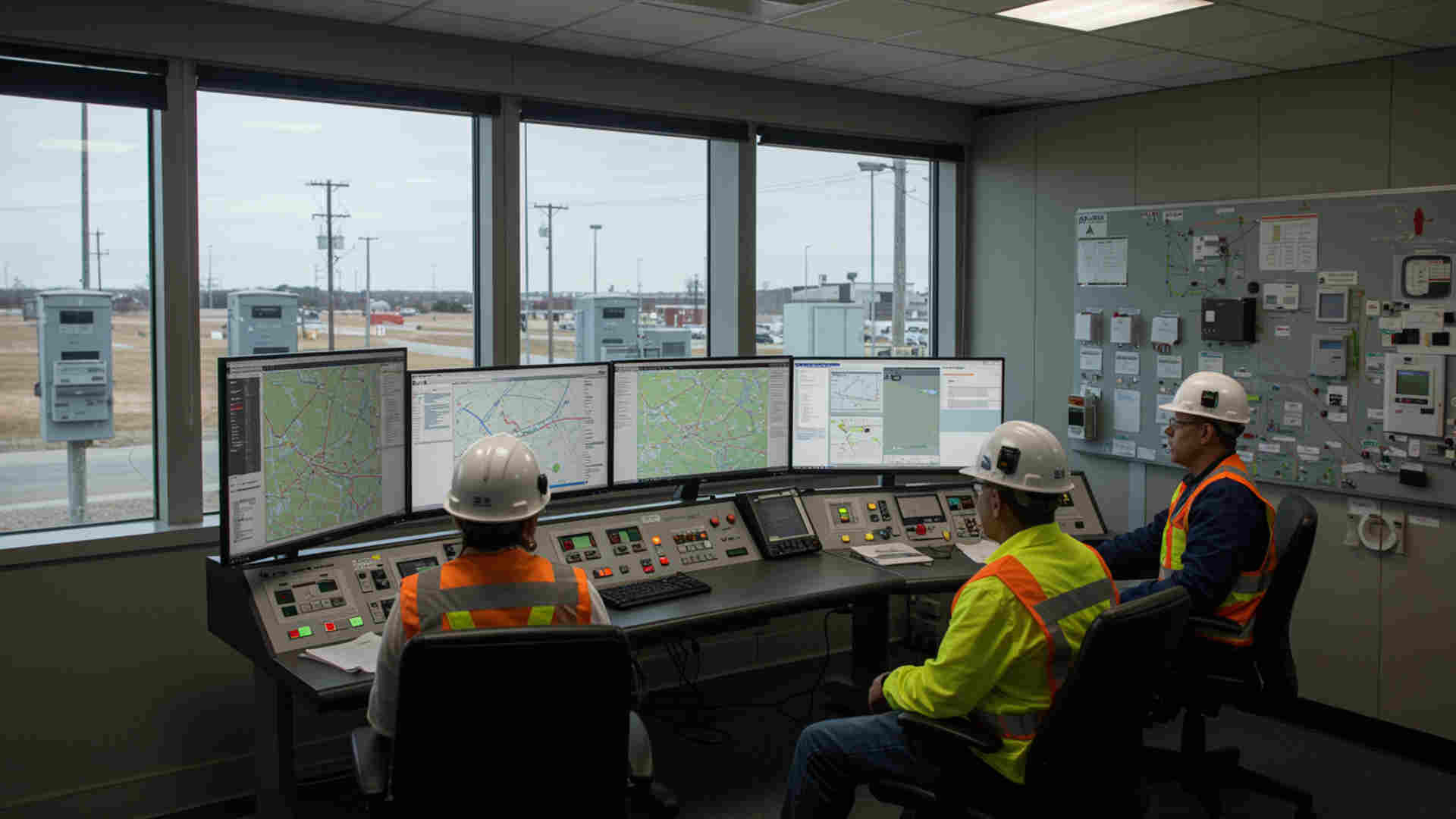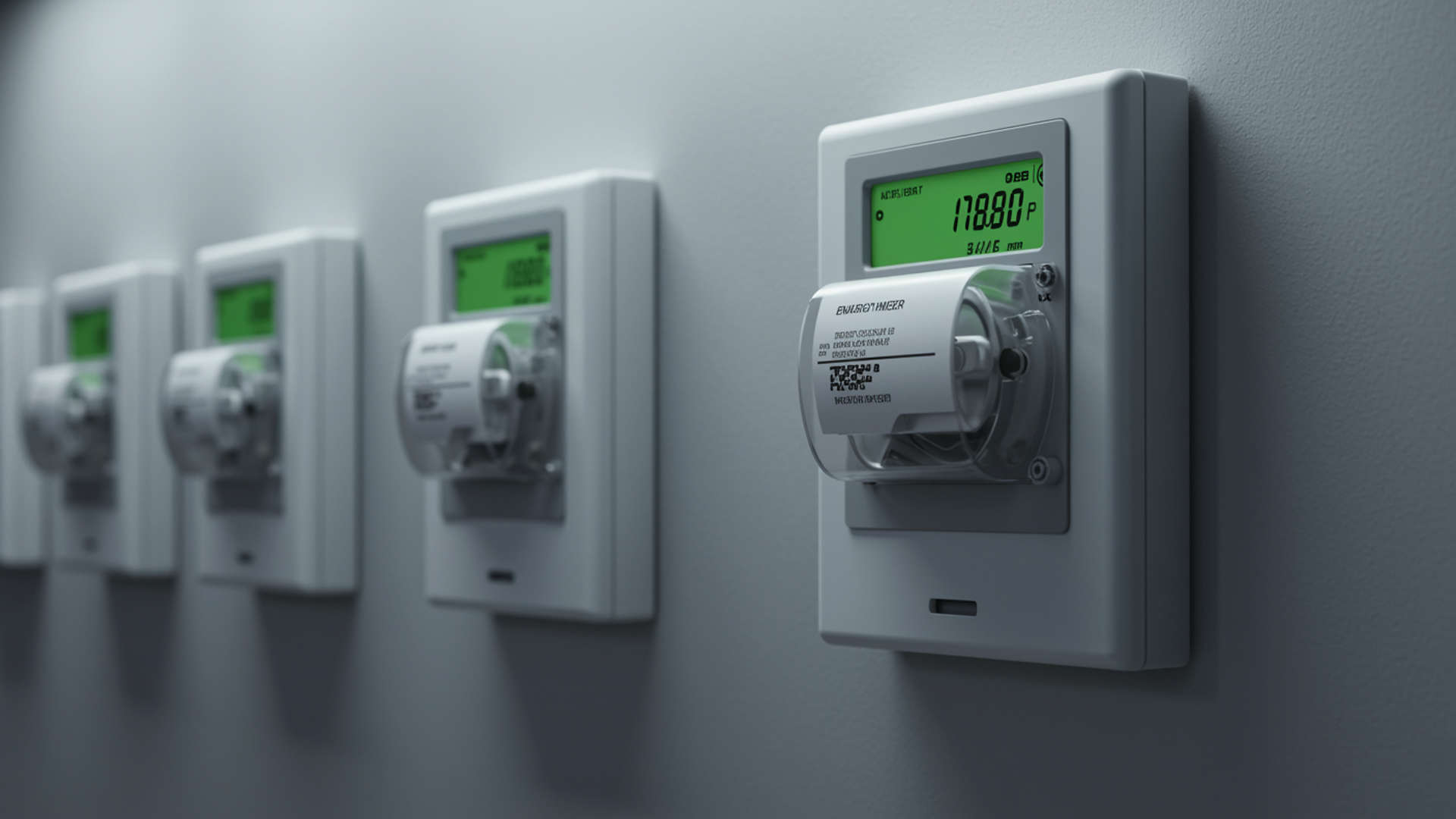What is Smart Metering?
Smart metering is defined as the use of digital meters to measure a customer's electricity, water or gas consumption in defined periods, securely transmitting their usage data to the utility in nearly real-time. Unlike traditional meters that required field staff to manually visit sites and log readings, smart meters generate time-stamped data and enable two-way communication between the consumer and the utility.
At its core, smart metering forms the foundation of Advanced Metering Infrastructure (AMI). It leverages metering hardware, communication networks and utility data platforms, to not only enhance billing but also attain operational intelligence. This includes outage warnings, device anomaly identification, predictive maintenance and dynamic tariffing.
Smart meters market context (US and North America)
- As per research by US EIA (Energy Information Administration), smart meters were already present in 72% of households in the United States.
- Residential households accounted for about 88% of total smart meter installations
- The smart meter market in the US had already reached a valuation of $5.05 Billion in 2024, according to Globe Newswire.
- The market is expected to grow at a CAGR 8.64% from 2025-2032, reaching an estimated value of $9.76 Billion.
- A study by Berg Insight reveals the installed base of smart meters in the North America region stood at 145.9 million in 2023, and is expected to touch 182 million by 2029.
%20-%20visual%20selection.png)
How Smart Metering Works: Meters, Networks, and Platforms
In the utility context, the concept of smart metering is beyond installing digital devices on homes or substations. It can be referred to as a network of systems where meters capture data, communication networks transmit it and utility solutions validate, process and transform the data into actionable insights.
To give you an idea, let’s take an example of how a smart metering system works for electric utilities.
Smart electricity meters: Interval reading and bidirectional communication
Smart electricity meters, also known as AMI meters, capture consumption data at set intervals of 15, 30 or 60 minutes. The usage data is then transmitted to HES (head end systems), which is then sent to the MDMS (meter data management system) for cleansing, validation, storing and analysis. Unlike regular meters, these devices don’t just record, but also communicate.
- Interval readings: Provides granular consumption profiles, allowing utilities to implement dynamic tariffs and detect anomalies early on.
- Two-Way communication: Utilities can send remote commands, such as RC/DC (remote connect/disconnect) for starting/stopping services or firmware upgrades, without deploying field personnels.
- Event detection: Smart meters provide alerts for possible tamper, reverse energy flow, non-communication, etc; improving operational agility.
Communications Networks: RF Mesh, PLC, Cellular/LPWAN
Once smart meters capture the data, it travels over the utility’s field network. This takes place over communication networks tailored to geography, density, and cost considerations.
RF Mesh (Radio Frequency Mesh)
This mode of network works best in urban or suburban neighborhoods where meters are close to each other. Each meter acts like a node, relaying data to its neighbors until it reaches a collector.
Advantages: High penetration through buildings, low latency for anomaly detection.
Potential Drawbacks: Higher infrastructure cost, energy consumption in dense setups.
PLC (Power Line Communication):
Here, data is shared via existing electrical wiring, making it a feasible approach where building new towers isn’t feasible.
Advantages: Cost-effective, leverages existing infrastructure.
Potential Drawbacks: Performance can dip in noisy networks (e.g., heavy industrial loads, transformer crossings).
Cellular / LPWAN (NB-IoT, LTE-M, LoRa):
In this case, utilities leverage telecom networks or dedicated low-power wide-area bands. This is optimal for rural or distributed coverage, where the meter density is lower.
Pros: Simple scaling, long battery life, less maintenance difficulties.
Potential Cons: Coverage can be poor while underground/remote, pricing per telco contracts.
HES & MDM: Getting Interval Data Ready for Billing
When it comes to utilities, without the right back end system all that smart meter data is just noise. That is where Head-End Systems (HES) and Meter Data Management (MDM) come in. They create the control tower and accounting office that ensure every single kilowatt-hour is accounted for, validated and ready to be converted into revenue.
Head-End System (HES): The Control Tower
- Timely data collection: The HES receives interval readings, along with voltage events and outage alerts coming from the smart meters. Utilities can configure the frequency in which these readings get sent to the HES (15, 30 or 60 minutes). Smart meter solutions like Grid, signal any missing measurements and automatically send alerts.
- Remote commands: Each remote command (like connect/disconnect) goes through safety checks and are logged with full audit trails. This means that executives can be assured that there will not be accidental disconnects or compliance gaps.
- Multi-network support: Today’s HES can easily manage data coming from different types of communication networks (RF Mesh, Cellular) without creating data silos. To executives, this means consistent visibility of intelligence regardless of geographic location.
Meter Data Management System (MDM): The Accounting Office
- Data validation: Not every raw meter reading is received in a ready-to-use state. MDMS applies VEE (Validation, Estimation, and Editing) rules to fill small gaps, correct outliers, and flag larger anomalies. When MDMS applies this construct, utilities can stop billing errors before they can impact consumer bills.
- Long-term storage and analytics: MDMS stores billions of interval records over time. They provide a means for utilities to detect fraud, and they can also use their records to plan for infrastructure upgrades without the system slowing down. Also, solutions like GridVault come with data warehousing capabilities that enable utilities to store, organize, and ultimately manage 1 billion or more data points daily. The solution also provides custom reporting features for users to visualize their data as per their needs.
- Billing readiness: Before a bill is issued, MDMS ensures that the data is clean, complete, and reconciled. This process thus helps reduce instances of estimates in billing and minimize customer complaints.
- Executive dashboards: Utilities can configure KPI tracking (Weekly or monthly) and get insights like percentage of successful reads, command success rates, or retry backlog. Overall, this provides confidence to leadership teams that things are moving in the right direction.
Benefits of Smart Metering for Utilities (Accuracy, Reliability, Revenue)
For U.S. utilities, the key benefits of smart metering lies in billing accuracy, faster outage management, revenue protection, and operational efficiency. Let’s break each of them down.
Billing Accuracy & Fewer Estimated Bills
With smart electricity meters transmitting interval data (every 15–60 minutes), utilities now bill based on verified consumption instead of estimations. Here, accuracy isn’t just about fewer complaints. It builds regulatory trust and reduces revenue leakage from under-billing.
Faster Outage Detection and Restoration
Modern smart meters are equipped with sensors that send ‘last-gasp’ signals and voltage sag alerts, notifying service loss in real time. Faster confirmation means fewer customer calls, quicker crew dispatch, and improved SAIDI/SAIFI scores.
As per a study conducted by MIT Sloan, the length of outages decreased by 5.5% on average after smart meter deployments.
Revenue Protection & Loss Analytics
Utilities can now reduce non-technical losses (theft, bypassing, tampering) cost utilities billions annually. Smart metering solutions are equipped with features to detect events like reverse energy flow outside solar hours, or load mismatches across feeders. Anomalies can now be automatically mapped to assets, feeders, or customer accounts for investigation.
Operational Efficiency: Remote Connect/Disconnect & Field Ops
Smart meters enable RC/DC (remote connect/disconnect), saving utilities the cost of dispatching field crews for service starts, stops, or disconnections. With platforms like Grid SMOC (smart meter operations center), utilities can improve their RC/DC success by 30% by standardizing eligibility checks and command protocols.
Risks in Smart Metering (and Ways to Mitigate Them)
Like any enterprise project, smart metering too has its own set of challenges. To mitigate these risks, utilities must treat AMI as a continuous program and not a one-time deployment project. Here’s what executives need to watch for.
Communication Gaps & Data Completeness SLAs
Utilities need to keep track of missed or delayed meter reads that can ripple across billing, loss analytics, and outage detection. Gaps in data often result in billing estimations, erode consumer trust, and impact compliance adherence.
How to Mitigate Them:
- Configure data completeness monitoring across defined thresholds (8/12/24-hour)
- In case of meter non-communication, auto-trigger retries or escalate the issue to field crews
- Ensure VEE logic is applied to correct small gaps before bills are run.
Device/Firmware Exceptions & Command Safety
Not all RC/DC or firmware commands succeed. These failures can stem from unsafe load conditions, mismatched firmware, or faulty devices. For utilities, every failed command translates to a wasted resource. And every unsafe command could result in reputational risk.
How to Mitigate Them:
- Always run safety checks before issuing RC/DC commands
- Establish and maintain command-level audit trails (who, what, when, why)
- Conduct SAT (site-acceptance test)re-runs to confirm stability post-install
Late/Estimated Billing & Protocol Governance
Every instance of delayed billing profiles or missed submissions means lost revenue and regulatory breaches.
How to Mitigate Them:
- Develop SLA playbooks that escalate delays before they reach billing cycles
- Set protocol-monitoring to flag missing register reads or low estimation confidence
- Automated workflows to notify billing and finance teams in real time
Grid in Action: Mitigating Smart Metering Risks and Challenges
Modern utilities can no longer just rely on static dashboards. What they need is a process that keeps the system running even when data gaps, device issues, or billing delays arise. Grid is purpose-built for utilities to overcome data management and operational risks. Our utility data management solution can be configured to follow a workflow that ensures problems are caught early, fixed quickly, and logged for accountability.
Real-time detection & monitoring ( SLA enforcement and adherence)
Our in-house solution Grid SMOC can be set up to continuously check incoming meter data against defined thresholds (for example, 8/12/24-hour windows). If a group of smart meters in an electricity project misses a scheduled read, the system flags it in real time. Instead of waiting until billing day, operations teams know instantly when data is incomplete.
Auto-trigger & escalation (Retries & field Ops)
Once a gap is detected, Grid’s WFM (workforce management) solution automatically initiates retries at the HES level. If meters still fail to respond, the system auto-escalates the issue by generating a workflow ticket for field crews. This way, human resources are dispatched only when digital retries are exhausted.
Validation & correction (Device/Firmware Safety)
Before a remote command like RC/DC is issued, Grid’s custom reporting solution runs predefined safety checks which includes verifying load conditions, firmware compatibility, and eligibility. So when a command fails, it isn’t lost in a black box. Instead, it is logged with a full audit trail (“who, what, when, why”) so leaders and executives can trace the root cause without relying on guesswork.
Govern & Assure (Billing Protocols)
In a real-life use case, Grid SMOC was configured to monitor billing protocol submissions (such as monthly profiles) against SLA timelines. If delays occur, escalation playbooks automatically kick in, alerting billing managers, triggering backup estimation logic, and ensuring utilities do not miss timelines. This framework not only prevents revenue leakage but also helps reduce regulatory fines.

FAQs (Frequently Asked Questions)
What is smart metering in utilities?
Smart metering can be defined as sophisticated meters that track electricity, water, or gas usage in designated time intervals and transmit the data back to utilities. Compared to traditional meters, smart meters enable two-way communication, provide real-time alerts about outages, ensure up-to-date billing and support operational commands like remote connect/disconnect.
How does smart metering work?
A smart meter records consumption data at designated time intervals (15, 30 or 60 mins) and sends it via communication networks like RF mesh, PLC, or cellular/LPWAN. The data is sent back to a utility's HES (Head-End Systems) and then to MDMS (Meter Data Management Systems) for validation, short term storage, payment/billing, operational analytics, etc.
What are the benefits of smart metering for utilities?
Smart meters positively contribute to billing accuracy, reduce estimated bills, enhance outage detection, ensure revenue protection, etc. In the US, utilities reported an average 4% reduction in electricity loss after the deployment of AMI utility meters.
better SAIDI/SAIFI scores and a ranged decrease of 4-7% on loss rates post AMI utility metering deployment.
What distinguishes smart meters from regular meters?
Regular meters require personnel to visit locations and note cumulative monthly readings manually. Smart meters produce time-stamped data in time intervals, notify users of outages and tampering, and can send remote operation commands.
Who qualifies for a smart meter?
In the US, most residential, commercial, and industrial customers are eligible because utilities are implementing AMI, Smart Meter programs. In fact, the US has around 112 million residential smart meters, as per studies conducted by Statista.
Do smart meters cost more for consumers?
The initial cost for smart meters is higher compared to regular meters. However, with features like theft & anomaly detection, outage detection, dynamic tariffs, DER support, etc, the long term utility costs are lowered by considerable margins.
Conclusion: Moving from Data to Decisions with Smart Metering
Smart metering is no longer merely a matter of putting in digital meters in place of aging meters; it is about changing raw consumption data into tangible business results. For utilities in the U.S., the ability to reduce losses, improve billing accuracy, and improve grid reliability depends on how well their AMI programs are managed beyond rollout.
It is a must for every utility today to shift from static dashboards to proactive workflows, where anomalies are detected in real time, billing protocols are managed exactly, and operational KPIs are monitored continuously. This can help achieve both regulatory confidence and improve consumer trust. If you are an utility leader and contemplating how to make this transition, you can see how Grid has helped enterprises optimize SLA monitoring, enhance reporting, and improve RC/DC success.
Get in touch with our team today to explore how leading U.S. utilities are already cutting outage times, reducing estimated bills, and improving SLA compliance. Our experts will guide you as to how you can bring these outcomes into your own operations




.jpg)







